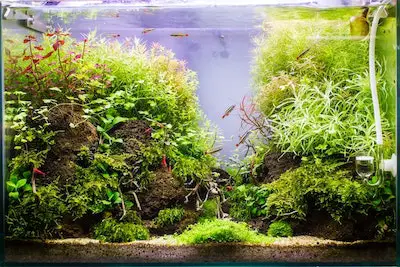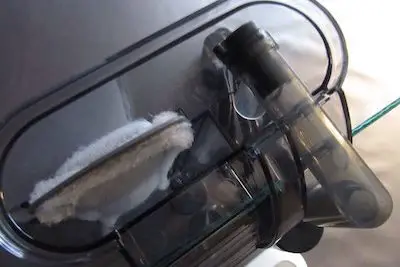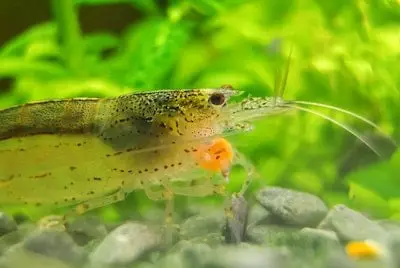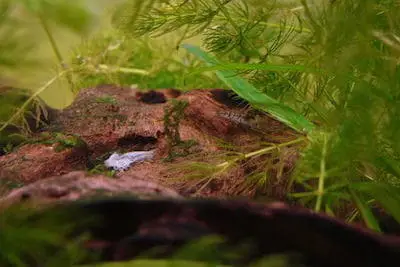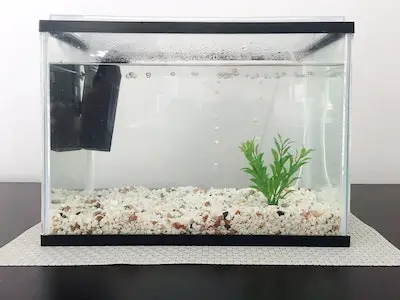How to Acclimate Shrimp: Everything You Need to Know
Even though shrimp are generally pretty easy to care for, it might take some time for them to adjust to their new surroundings.
This is a complex process for them; therefore, you must do everything in your power to make the change as painless and straightforward as possible for your shrimp.
The majority of your freshly acquired shrimp may not make it if you ignore the acclimation process.
Fortunately, in this article, I’ll walk you through everything you need to know about how to acclimate shrimp to your aquarium.

Contents
Does It Matter How You Add Shrimp to an Aquarium?
Absolutely. Switching a shrimp’s surroundings can cause severe stress.
Shock and even death can result if you add too much aquarium water too quickly.
You offer your shrimp an opportunity to adapt to the unfamiliar water conditions and future surroundings by using acclimation.
Not all the stress is eliminated, but it considerably maximizes the chances of successful acclimation.
What’s the Best Way to Add Shrimp to an Aquarium?
There is some truth to the claim that you may acclimate shrimp differently, which is accurate to a degree.
On the other hand, drip acclimation is the most effective and safe approach.
If you follow the proper steps and slowly introduce your shrimp to the new environment of the new tank, it usually takes a few hours.
You can’t pour cups of water into the tank like you can with other fish species; alternatively, water will be administered in tiny doses through a nozzle and an irrigation tube.
How Long to Drip Acclimate Shrimp
This procedure should take 1-2 hours on average, based on how different the water is.
If the water is dramatically different or the shrimp species is delicate, you should do acclimation for a more extended period of time.
How Do You Drip Acclimate Shrimp?
Before we get into how to acclimate shrimp, the steps to prepare for acclimation are important to discuss.
If you’re thinking of adding shrimp to your aquarium, you’ll want to take some time to set everything up. In other words, you’ll need to schedule your shrimp purchase so that you will have a few hours free.
It takes a minimum of a few hours for shrimp to get used to their new environment.
Shrimp, as you may be aware, can be rather expensive. It would be a waste of money if you spent it on the shrimp and then failed to give them the proper care, resulting in their demise.
Do it on a day off, if possible.
Then there’s the issue of transportation. Even the tiniest fluctuation in temperature can have severe consequences for shrimp, which are highly vulnerable to stress.
It’s best to grab the shrimp last if you have some other errands to run, so they don’t have to sit in the bag for too long.
A cooler or another container will help maintain the temperature while they’re being transported.
Tank Preparation
Shrimp acclimation is greatly aided by providing a suitable tank environment.
Shrimp species can adapt to a wide range of environmental situations. The more rare and sensitive species, on the other hand, have particular needs.
Any form of acclimation stresses shrimp. It doesn’t matter how well you follow the steps; they will struggle if the new water isn’t up to par.
Be aware of the unique requirements for each species you intend to acquire.
Temperature, nitrite, ammonia, pH, and nitrate concentrations must all be within acceptable ranges for the process to be successful.
At least a few days before you buy shrimp, make sure you have the right circumstances in place.
I recommend giving your tank at least one week to establish its new environment. In addition, you’ll be able to solve any possible problems that may arise during these few days.
How to Acclimate Shrimp via Drip Irrigation
The water temperature needs to be checked before beginning your journey. Make sure it’s suited to your shrimp’s type of food.
It’s a good idea to do it just prior to picking up your shrimp or when your shrimp will be delivered.
You’ll need these things to accomplish the acclimation successfully:
- A bucket
- A control nozzle or airline valve for the actual acclimation procedure
- An airline tube
Buying a little fishnet is a good idea if you don’t already have one.
Everything else, like buckets, can be found at any fish or hardware store, assuming you don’t already have some at home.
Once you have your supplies, you’re all ready to go.
To begin the process, transfer the shrimp from the bag they came in to a bucket, which should be a small one. It’s also a good idea to include the water they arrived in.
Larger buckets could be too massive for the small quantity of water inside the shrimp bag; therefore, smaller ones are preferable.
You need a container with three times more water than the bucket has at that moment and put it on a higher level, like a shelf.
Put one end of the airline tube in the bucket and connect it to the airline valve or control nozzle. Your tank or container gets the other end.
It would be best to create a siphon at the end of the tube while the airline valve is open to get the water flowing. Make sure you don’t swallow aquarium water.
Reconnect the tubing to the bucket and let it fill with water.
After you’re convinced that the water is flowing as it should you can adjust the drip of water. Adjusting the valve to drop around 1-2 drips of water per second will ensure that the acclimation goes smoothly.
And there you go! After one to two hours, everything should be fine, and your shrimp will feel comfortable in the new water and you can safely transfer them to the aquarium.
In Summary
To ensure that your shrimp are adapting nicely to the new environment, keep an eye on them during the process.
If you notice that the shrimp are swimming frantically, this could be a bad sign. Maybe the water is being added too quickly. In this case, slow down the drip.
Or perhaps the water parameters need to be changed. Test the ammonia, nitrate, and nitrite levels. This should solve any potential issue.
Refer back to this guide any time when you’re ready to acclimate new shrimp into your tank. You can be sure that your shrimp will live a full life in their new aquarium.
